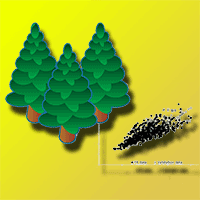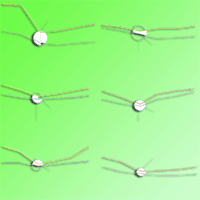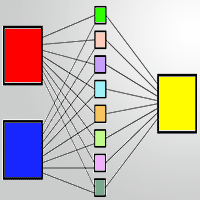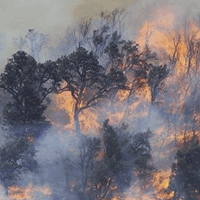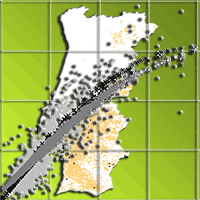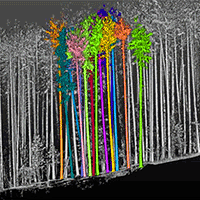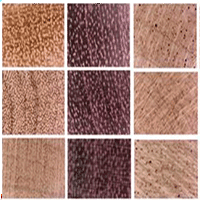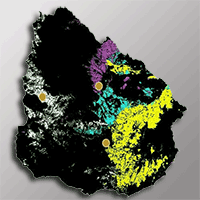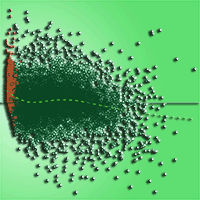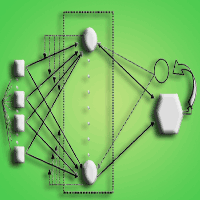
The use of tree crown variables in over-bark diameter and volume prediction models
Ramazan Özçelik (1), Maria J Diamantopoulou (2) , John R Brooks (3)
iForest - Biogeosciences and Forestry, Volume 7, Issue 3, Pages 132-139 (2014)
doi: https://doi.org/10.3832/ifor0878-007
Published: Jan 13, 2014 - Copyright © 2014 SISEF
Research Articles
Abstract
Linear and nonlinear crown variable functions for 173 Brutian pine (Pinus brutia Ten.) trees were incorporated into a well-known compatible volume and taper equation to evaluate their effect in model prediction accuracy. In addition, the same crown variables were also incorporated into three neural network (NN) types (Back-Propagation, Levenberg-Marquardt and Generalized Regression Neural Networks) to investigate their applicability in over-bark diameter and stem volume predictions. The inclusion of crown ratio and crown ratio with crown length variables resulted in a significant reduction of model sum of squared error, for all models. The incorporation of the crown variables to these models significantly improved model performance. According to results, non-linear regression models were less accurate than the three types of neural network models tested for both over-bark diameter and stem volume predictions in terms of standard error of the estimate and fit index. Specifically, the generated Levenberg-Marquardt Neural Network models outperformed the other models in terms of prediction accuracy. Therefore, this type of neural network model is worth consideration in over-bark diameter and volume prediction modeling, which are some of the most challenging tasks in forest resources management.
Keywords
Crown Variables, Taper, Back-Propagation ANNs, Levenberg-Marquardt ANNs, Generalized Regression Neural Networks
Authors’ Info
Authors’ address
Faculty of Forestry, Süleyman Demirel University, East Campus, TR-32260, Isparta (Turkey)
Faculty of Forestry and Natural Environment, Aristotle University of Thessaloniki, GR-54124 Thessaloniki (Greece)
Division of Forestry and Natural Resources, West Virginia University, 322 Percival Hall, 26506-6125 Morgantown (WV - USA)
Corresponding author
Paper Info
Citation
Özçelik R, Diamantopoulou MJ, Brooks JR (2014). The use of tree crown variables in over-bark diameter and volume prediction models. iForest 7: 132-139. - doi: 10.3832/ifor0878-007
Academic Editor
Luca Salvati
Paper history
Received: Nov 12, 2012
Accepted: Aug 08, 2013
First online: Jan 13, 2014
Publication Date: Jun 02, 2014
Publication Time: 5.27 months
Copyright Information
© SISEF - The Italian Society of Silviculture and Forest Ecology 2014
Open Access
This article is distributed under the terms of the Creative Commons Attribution-Non Commercial 4.0 International (https://creativecommons.org/licenses/by-nc/4.0/), which permits unrestricted use, distribution, and reproduction in any medium, provided you give appropriate credit to the original author(s) and the source, provide a link to the Creative Commons license, and indicate if changes were made.
Web Metrics
Breakdown by View Type
Article Usage
Total Article Views: 55559
(from publication date up to now)
Breakdown by View Type
HTML Page Views: 45745
Abstract Page Views: 3201
PDF Downloads: 5075
Citation/Reference Downloads: 22
XML Downloads: 1516
Web Metrics
Days since publication: 4346
Overall contacts: 55559
Avg. contacts per week: 89.49
Citation Metrics
Article Citations
Article citations are based on data periodically collected from the Clarivate Web of Science web site
(last update: Mar 2025)
Total number of cites (since 2014): 29
Average cites per year: 2.42
Publication Metrics
by Dimensions ©
Articles citing this article
List of the papers citing this article based on CrossRef Cited-by.
References
Trigonometric variable-form taper equations for Australian eucalyptus. Forest Science 46 (3): 397-409.
Gscholar
Stem profile equations for southern tree species. Research Paper no. SE-282, Southeastern Forest Experiment Station, USDA Forest Service, Asheville, NC, USA.
Gscholar
Fundamentals of neural networks architectures, algorithms and applications. Prentice-Hall, Englewood Cliffs, NJ, USA.
Gscholar
Predicting diameter distributions of longleaf pine plantations: a comparison between artificial neural networks and other accepted methodologies. Research Paper SRS-25, Southern Research Station, USDA Forest Service, Asheville, NC, USA, pp. 24.
Gscholar
A method for the solution of certain problems in least squares. Quarterly of Applied Mathematics 2: 164-168.
Gscholar
Learning internal representations by error propagation. In: “Parallel distributed processing vol. 1” (Rumelhart DE, McClelland JL, Corporate PDP Research Group eds). MIT Press, Cambridge, MA, USA, pp. 318-362.
Gscholar
SAS/ETS User’s Guide, Version 9.0. SAS Institute Inc, Cary, NC, USA.
Gscholar
Testing, reporting, and using biomass estimation models. In: Proceedings of the “3rd Meeting of the Southern Forest Biomass Working Group” (Gresham CA ed). Georgetown (SC - USA), 11-12 June 2001. Bell W Baruch Forest Science Institute, Clemson University, NC, USA, pp. 95-112.
Gscholar
Applying neural networks, a practical guide (3rd edn). Morgan Kaufman Publishers Inc, S. Francisco, CA, USA, pp. 300.
Gscholar
A generalized approach for modeling and localizing stem profile curves. Forest Science 52: 670-682.
Gscholar

